
by James Dean | May 8, 2024 | Blogs, Branding Design, Logo Designing
Introduction
In the realm of home design, the kitchen stands as a central hub—a place where culinary creativity meets functional aesthetics. Articon Design Agency, a name synonymous with innovation and elegance, presents a modern kitchen design that transcends the ordinary. Let’s delve into the details of this captivating space and discover what makes it truly exceptional.

The Four Perspectives
1. The Sink Area: Functional Minimalism

The top left photo reveals the sink area—a testament to functional minimalism. The sleek faucet gracefully arches over a pristine countertop. Imagine washing fresh produce here, the water cascading gently into the basin. The choice of materials—perhaps quartz or marble—exudes sophistication.
2. The Culinary Zone: Where Magic Happens
In the top right photo, we encounter the heart of the kitchen—the culinary zone. A state-of-the-art cooking range, an oven waiting to bake delectable pastries, and an exhaust hood poised to whisk away fragrant aromas—all bathed in warm, inviting light. This is where culinary magic unfolds, where recipes become memories.
3. Illuminated Elegance: Ambient Lighting

The bottom left photo invites us to appreciate the play of light. The cabinets, clad in pristine white, come alive as built-in LEDs illuminate their contours. Imagine hosting an intimate dinner party here—the soft glow creating an ambiance that whispers sophistication. The countertop, perhaps midnight black, contrasts beautifully against the luminous backdrop.
4. Storage and Style: The Bottom Right View
Lastly, the bottom right picture showcases ample storage. Cabinets stretch from floor to ceiling, offering space for every culinary gadget and heirloom dishware. The built-in stove, seamlessly integrated into the countertop, epitomizes both functionality and style. Imagine pulling out a cast-iron skillet from those drawers, ready to sear a perfectly marbled steak.
The Bold Message
“BUILD YOUR DREAM HOME WITH US”—bold letters proclaiming Articon Design Agency’s promise. They invite you to envision your dream kitchen, your sanctuary of flavors and memories. And above it all, the agency’s name—Articon Design Agency—a beacon for those seeking excellence in home design.
Conclusion
As we step out of this visual journey, we’re left with a craving—a desire to create, to transform our own kitchens into spaces that blend aesthetics with functionality. Articon’s modern kitchen design inspires us to dream, to reimagine, and to build homes that resonate with our unique tastes.
So, whether you’re a seasoned chef or an occasional cook, let Articon Design Agency be your guide. Visit their website at www.thearticon.com and embark on a journey toward your dream kitchen—one that mirrors your soul and elevates your daily rituals.
Remember, the heart of a home lies in its kitchen, and Articon knows how to craft hearts that beat with elegance and purpose.
Bon appétit! 🍽️🏡
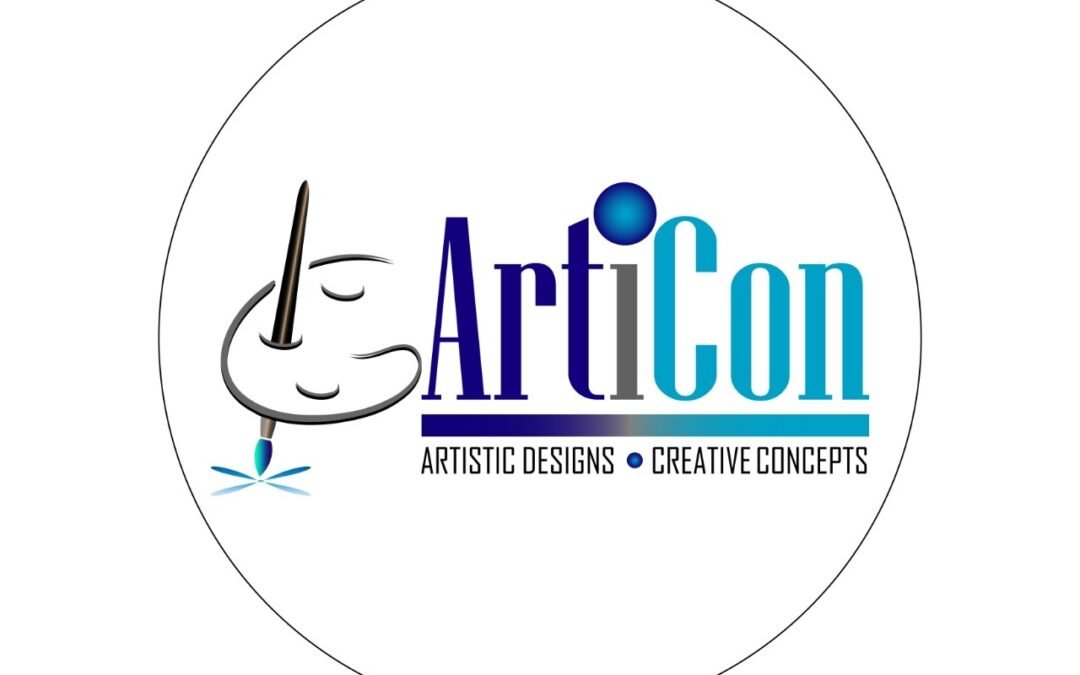
by James Dean | Apr 30, 2024 | Blogs, Branding Design, Digital Marketing, Logo Designing, Web Design, Web Development
Articon Design Agency was established in December 2020, with its offices spanning across the USA, Canada, and the UK. Founded by a dedicated team with over 12 years of collective experience in design, website development, and app development, Articon was born from a vision to deliver high-quality and cost-effective services to individuals and businesses facing budgetary constraints.
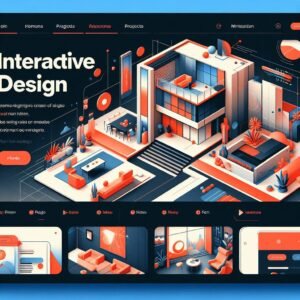
Empowering Ordinary People and Small Businesses
At Articon, the founders and team members are driven by a mission to empower ordinary people and small businesses. They achieve this by providing them with million-dollar service offerings in logo design, branding, website development, and app development. The agency believes in leveling the playing field and enabling clients to compete effectively in the corporate and professional arena.
Architecting Visual Identities
Articon’s graphic department is divided into specialized cells, each dedicated to specific types of work. Here’s a glimpse into what their Logo & Stationery Cell encompasses:
-
Logo Design Studio: Unleashing Creative Brilliance
-
In the Logo Design Studio, seasoned artists breathe life into brand identities. From concept to creation, they meticulously design logos that transcend mere symbols. These logos become visual narratives that speak volumes about a brand’s personality, values, and aspirations.
-
Stationery Design Hub: Elevating Brand Presence
-
The Stationery Design Hub turns every piece of collateral into a canvas for brand expression. Business cards, letterheads, envelopes—each element is thoughtfully designed to create a cohesive and professional brand presence, leaving a lasting impression on clients and partners.
-
Cell Department for Digital Brilliance: Transcending Boundaries
-
Beyond traditional stationery, the Digital Brilliance Department seamlessly integrates digital elements into brand collateral. From digital letterheads to email signatures, they bridge the gap between the physical and digital realms, ensuring consistency across online and offline platforms.
Redefining Design Standards
In summary, Articon Design Agency isn’t just designing websites; they’re sculpting the digital future and empowering businesses to thrive in the ever-evolving landscape of creativity and technology.
If you’d like to explore their portfolio or learn more about their specific projects, feel free to visit their portfolio. 🎨🚀

by James Dean | Apr 3, 2024 | Blogs, Branding Design
Michel Design Works
Since 1987, Michel Design Works has been a beacon of creativity and elegance, seamlessly blending fashion with functionality. This comprehensive lifestyle brand offers a delightful array of bath and body products, fragrances, home décor, and gifts. Let’s explore the essence of Michel’s Design Works and why it continues to captivate hearts worldwide.
Michel Design Works: 35 Years of Artisanal Excellence in Lifestyle Products
Picture walking into a boutique where every item tells a story, where vintage charm meets modern luxury, and where functionality dances with artistic excellence. This is the world of Michel Design Works, a brand that has been transforming everyday items into works of art since 1987.
A Legacy of Artistic Innovation
When Michel Design Works first opened its doors in 1987, few could have predicted its evolution into the lifestyle powerhouse it is today. From humble beginnings to becoming part of the prestigious Stonewall Kitchen family of brands, their journey is a testament to the enduring appeal of thoughtful, beautiful design.

Why Custom Design Still Matters
While AI-powered image creators offer speed and convenience, custom design remains irreplaceable:
-
Uniqueness: Custom designs are exclusive, setting your brand apart from the crowd. No mass-produced template can replicate their individuality.
-
Brand Identity: A custom logo or packaging design reflects your brand’s personality. It’s the visual embodiment of your story and values.
-
Emotional Connection: Custom designs evoke emotions. They resonate with viewers, leaving a lasting impression.
Balancing Creativity and Practicality
In the ever-evolving world of design, Michel Design Works strikes the perfect balance. It’s where artistry meets everyday functionality—a celebration of beauty, nostalgia, and thoughtful craftsmanship.
Remember, when choosing between image creators and custom design, consider the soul behind each creation. Michel Design Works reminds us that true beauty lies in the details.
The Michel Design Works Difference
What sets Michel Design Works apart in today’s mass-produced marketplace? It’s their unwavering commitment to:
-
Vintage-Inspired Artistry: Each product serves as a canvas for intricate designs that harken back to a more elegant era
-
Premium Quality: Every item, from their triple-ply napkins to their scented candles, exemplifies superior craftsmanship
-
Thoughtful Integration: Their products seamlessly blend into both modern and traditional spaces
The Art of Custom Design in a Digital Age
In an era where AI-generated designs are becoming commonplace, Michel Design Works stands as a beacon for the irreplaceable value of custom design. Here’s why their approach matters more than ever:
1. The Power of Uniqueness
Unlike mass-produced templates, each Michel Design Works piece carries its own distinctive character. This uniqueness creates:
-
Instant recognition
-
Collector appeal
-
Lasting value
2. Brand Storytelling Through Design
Their designs don’t just decorate – they narrate. Every pattern and motif is carefully chosen to:
-
Reflect brand heritage
-
Convey quality
-
Create emotional connections
3. The Human Touch
In a world increasingly dominated by digital creation, Michel Design Works reminds us that human creativity brings:
-
Warmth and authenticity
-
Attention to minute details
-
Emotional resonance
A Blueprint for Modern Artisans
Companies like Articon Design Agency are following in Michel Design Works’ footsteps, recognizing that success lies in:
-
Balancing tradition with innovation
-
Maintaining unwavering quality standards
-
Creating products that tell stories
The Future of Artisanal Design
As we look to the future, Michel Design Works shows us that there’s always room for brands that:
-
Honor craftsmanship
-
Embrace artistic heritage
-
Create practical luxury
Why It Matters Today
In an age of rapid production and digital shortcuts, Michel Design Works reminds us that true luxury lies in:
-
Taking time for quality
-
Appreciating artistic detail
-
Choosing items that bring both beauty and function to our daily lives
Creating Your Own Legacy
Whether you’re a designer, brand owner, or appreciator of fine craftsmanship, Michel Design Works offers valuable lessons:
-
Stay true to your artistic vision
-
Never compromise on quality
-
Remember that details matter
Final Thoughts
As we navigate an increasingly digital world, Michel Design Works stands as proof that artisanal quality and custom design will always have their place. Their success isn’t just about creating beautiful products – it’s about maintaining the human touch in everything they do.
Want to explore the world of premium lifestyle products? Visit a Michel Design Works retailer near you and experience the difference that 35+ years of artistic excellence makes.
Keeping in Mind the Real Dedication and Workmanship, Articon Design Agency is on the footmark of This Great Example of Creativity and Practicality.
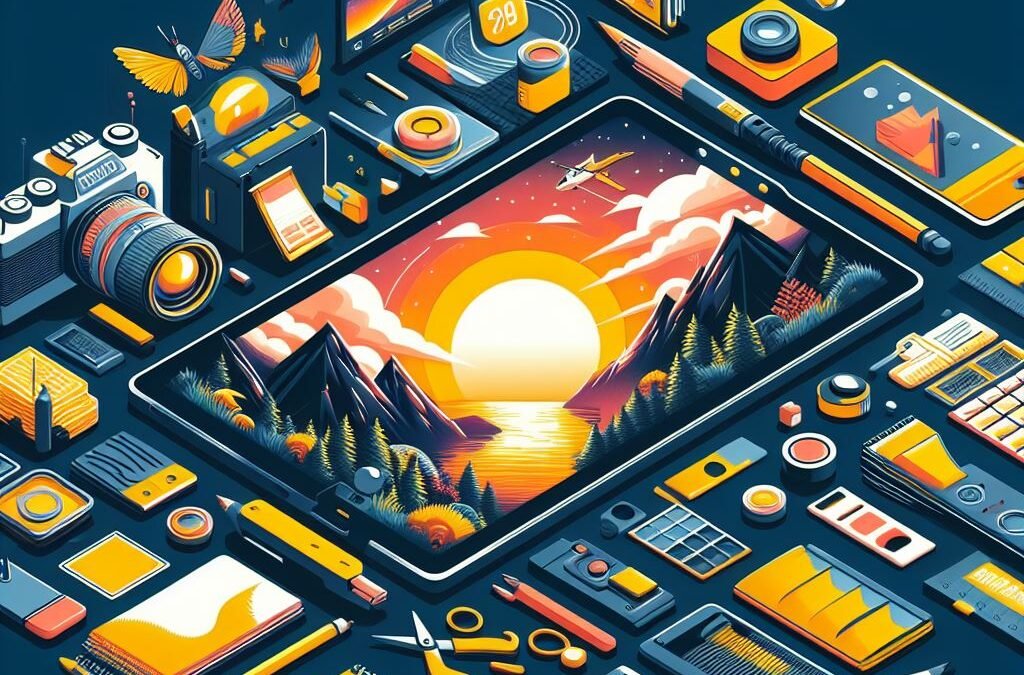
by James Dean | Apr 3, 2024 | Blogs, Branding Design, Logo Designing
Image Creator vs. Custom Design: Striking the Balance
In the ever-evolving landscape of digital content creation, the clash between Image Creators and Custom Design continues to shape how we approach visual communication. Let’s delve into the strengths and limitations of each approach and explore why custom design still holds a special place in the hearts of creators.
Image Creator: The AI-Powered Marvel
-
Unleashing Creativity: Image Creators, often fueled by powerful AI models like DALL-E, can transform abstract prompts into stunning visuals. From whimsical landscapes to surreal creatures, the possibilities seem limitless.
-
Speed and Efficiency: Need an image in seconds? Image Creators deliver. They’re lightning-fast, making them ideal for rapid content production.
-
Endless Exploration: With Image Creators, you can venture into uncharted territories. Just describe your vision, and watch the AI weave magic.
Custom Design: The Artisan’s Touch
-
Tailored Precision: Custom design is like a bespoke suit—it’s meticulously crafted to fit your brand, message, and audience. Every line, color, and element is intentional.
-
Brand Identity: Your logo, website, or marketing collateral—custom design ensures consistency. It’s the face of your brand, reflecting its essence.
-
Emotional Connection: Custom designs evoke emotions. Whether it’s a minimalist logo or an intricate illustration, they resonate with viewers.
Why Custom Design Still Matters:
-
Uniqueness: Stand out in a sea of sameness. Custom designs are exclusive, unlike mass-produced templates.
-
Storytelling: Custom visuals tell stories. They convey your brand’s journey, values, and aspirations.
-
Human Touch: Behind every custom design is a human touch—a designer’s passion, expertise, and creativity.
Balancing Act: When to Choose What
-
Image Creators: Use them for quick social media posts, blog thumbnails, or experimental ideas.
-
Custom Design: Invest in it for your brand identity, website, and critical marketing materials.
Remember, both Image Creators and custom design have their place. It’s not a battle; it’s a symphony where each note plays a vital role.

Strike the balance wisely, and let your creativity soar! 🎨✨
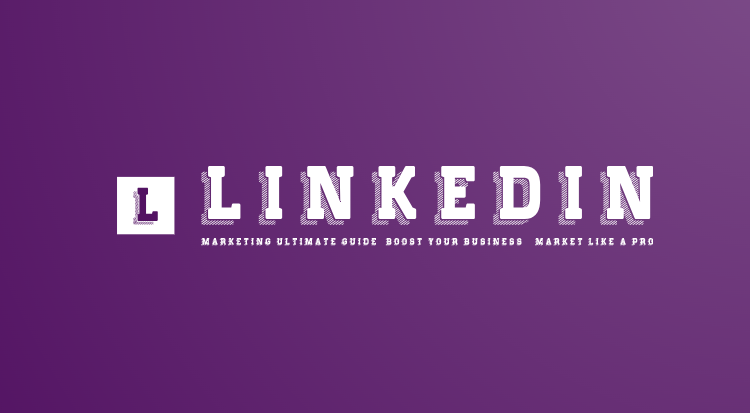
by James Dean | Feb 15, 2024 | Blogs, Branding Design, Technology, Writing Tips
Benefits of using LinkedIn for marketing include:
1. Targeted audience:
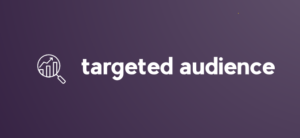
LinkedIn is a platform that attracts professionals and business decision-makers. This means you can reach a highly targeted audience for your business, increasing the chances of generating quality leads and conversions.
2. Lead generation:
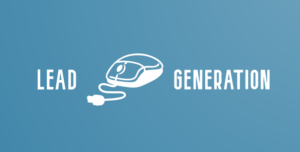
LinkedIn offers features like lead forms and lead generation ads that allow you to capture information from potential customers directly. This can help in building your email list and nurturing leads.
3. Networking opportunities:

LinkedIn provides a platform to connect with industry professionals, thought leaders, potential partners, and customers. Building relationships and networking can lead to collaborations, referrals, and business growth.
4. Brand development:
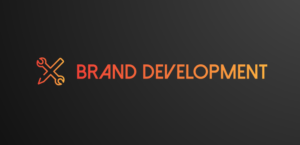
LinkedIn allows you to showcase your brand’s expertise, thought leadership, and company culture through company pages, employee profiles, and content sharing. This helps in establishing your brand’s credibility and reputation in your industry.
5. Recruitment:
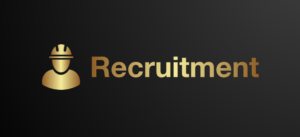
LinkedIn is a popular platform for job seekers and recruiters. You can use it to attract top talent, post job openings, and engage with potential candidates.
Getting Started with LinkedIn Marketing:
1. Create a compelling company page:
Set up a professional and complete company page that highlights your brand’s unique selling proposition, values, and offerings. Optimize your page with keywords and relevant information.
2. Define your target audience:
Identify your target audience based on industry, job title, location, and other relevant criteria. This will help you tailor your content and ads to reach the right people.
3. Content strategy:
Develop a content strategy that aligns with your business goals and resonates with your target audience. Share valuable content such as industry insights, tips, case studies, and thought leadership articles to establish your brand as an authority in your field.
4. Engage with your network:
Actively engage with your connections by liking, commenting, and sharing their content. This helps in building relationships and increasing visibility in your network.
5. Use LinkedIn groups:
Join relevant LinkedIn groups to connect with like-minded professionals and participate in discussions. This can help in building your network, gaining insights, and establishing your expertise.
6. Advertising on LinkedIn:
Explore LinkedIn advertising options like sponsored content, sponsored InMail, and text ads to reach a wider audience and generate leads. Use targeting options to reach your ideal audience and track the performance of your ads.
7. Measure and optimize:
Use LinkedIn analytics and other tracking tools to measure the performance of your LinkedIn marketing efforts. Adjust your strategy based on the insights obtained and optimize your campaigns for better results.
Remember, LinkedIn is a professional platform, so maintain a professional tone and focus on providing value to your audience. Keep your profile and content updated regularly to stay relevant and make the most of your LinkedIn marketing efforts.

by James Dean | Feb 13, 2024 | Blogs, Branding Design, Interior Designing, Logo Designing, Web Design, Web Development
Copyright Importance In Graphic Designing
Articon Design Agency is at the forefront of creativity, where imagination knows no bounds. As pioneers in the realm of graphic design, we understand the paramount importance of safeguarding creative brilliance through comprehensive copyright protection. In this article, we delve into the intricate world of copyright in graphic design, offering insights and guidance to ensure that your artistic masterpieces remain protected while your imagination continues to soar.

Understanding Copyright in Graphic Design:
- Automatic Protection:
- Just like a stroke of genius, copyright protection is granted automatically upon creating an original work fixed in a tangible medium. This fundamental principle applies to various forms of graphic design, including illustrations, logos, and digital artworks.
- Originality:
- Copyright in graphic design hinges on the concept of originality. It safeguards works of authorship that are the product of the creator’s creativity, prohibiting direct copies of others’ works. At Articon Design Agency, we celebrate each designer’s unique vision and innovative spirit, ensuring that every creation is a testament to artistic ingenuity.
- Rights Granted:
- Copyright grants designers exclusive rights to reproduce, display, and distribute their artwork. These rights serve as a protective barrier, empowering creators to control the usage and dissemination of their designs in the public domain.
- Fair Use:
- While copyright provides robust protection, it’s essential to navigate the nuances of fair use. This legal doctrine allows for the limited use of copyrighted material under specific circumstances, respecting the balance between creators’ rights and societal interests.
- Licenses:
- Through licensing agreements, graphic designers can selectively grant usage rights to others while retaining ownership of the copyright. These agreements offer flexibility and clarity, ensuring the creator’s vision is preserved while facilitating collaborative endeavors.
Why Copyright Matters for Articon Design Agency:
- Protection of Creative Assets:
- Copyright serves as a bulwark against unauthorized use, replication, or modification of our designs. By securing copyright protection, we uphold the integrity of our creative assets and maintain control over their usage in diverse contexts.
- Preserving Brand Identity:
- Our designs are not merely artworks; they are embodiments of brand identity and vision. Copyright protection safeguards the essence of our client’s brands, ensuring that their visual identities remain distinctive and memorable in the marketplace.
- Fostering Innovation and Collaboration:
- Respect for copyright fosters a culture of innovation and collaboration within the design community. By honoring creators’ rights and acknowledging their creative contributions, we cultivate an environment where ideas flourish, and collaborations thrive.
Conclusion:
At Articon Design Agency, we champion the principles of creativity, originality, and integrity. Through robust copyright protection, we uphold the rights of creators, preserve brand identity, and foster a culture of innovation. As stewards of artistic excellence, we invite fellow designers and enthusiasts to join us in celebrating the transformative power of graphic design, where every stroke of genius is cherished, and every creative endeavor is celebrated. Together, let us continue to push the boundaries of imagination and create a world where creativity knows no bounds.

by James Dean | Feb 4, 2024 | Blogs, Branding Design, Web Design, Web Development
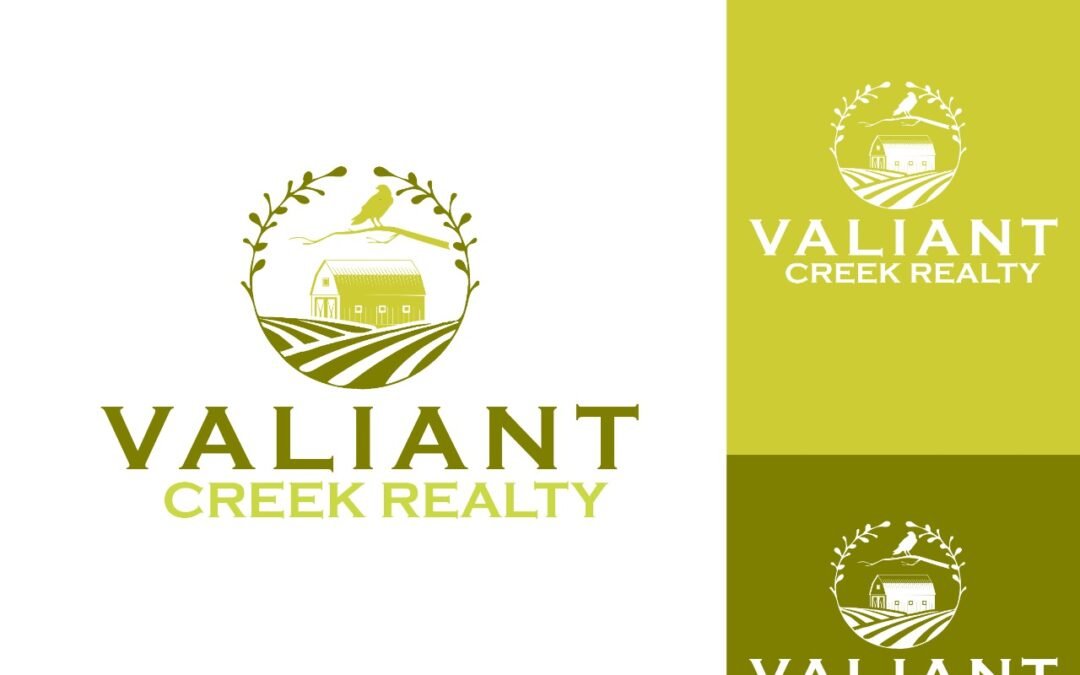
by James Dean | Jan 21, 2024 | Blogs, Branding Design, Logo Designing
The Valiant Creek Logo Design Odyssey with Articon
The Valiant Creek Logo Design Odyssey with Articon
Custom Logo Design Sample And study: In the realm of digital canvases and creative endeavors, every business seeks a symbol that encapsulates its spirit and ethos. Join us on a fascinating journey into the creation of the emblem for ‘Valiant Creek,’ a venture that epitomizes resilience and strength.
The Virtual Encounter:
As the virtual doors of our creative studio swung open, a prospective client, let’s refer to them as the ‘Customer,’ stumbled upon our portfolio. Intrigued by the promise of visual storytelling, they embarked on a journey that would redefine the visual identity of Valiant Creek.
Enter Articon:
Enter Articon, the virtual architect behind the artistic wonders. The Customer, driven by a desire for a distinctive logo, found themselves in a realm of possibilities. The first point of connection was the array of logo design samples that spoke volumes about Articon’s craftsmanship.
The Initial Dialogue:
The dialogue commenced as the Customer expressed the essence of Valiant Creek – a business synonymous with courage, resilience, and forward momentum. Articon, armed with creative tools and a passion for translating ideas into visual wonders, listened intently.
Adobe Illustrator: The Artistic Weapon of Choice:
The conversation seamlessly transitioned into the choice of tools. Articon explained the rationale behind using Adobe Illustrator – a digital powerhouse that breathes life into creative visions. The precision, versatility, and scalability offered by Illustrator became the linchpin in bringing Valiant Creek’s identity to life.
Articon’s mastery over Adobe Illustrator meant that every stroke, curve, and color choice was a deliberate move towards creating a logo that transcended mere aesthetics. It was about crafting an emblem that echoed the very essence of Valiant Creek – strong, dynamic, and enduring.
Crafting the Samples:
With Valiant Creek’s story as a guiding beacon, Articon set out to create a series of logo samples. Each stroke, curve, and color palette was carefully chosen to resonate with the brand’s narrative. The samples weren’t just designs; they were visual stories waiting to be told.


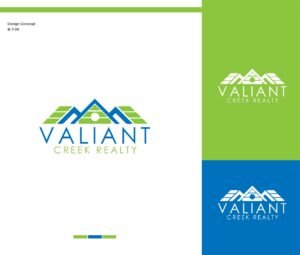
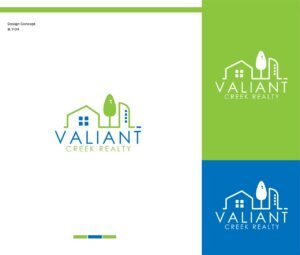
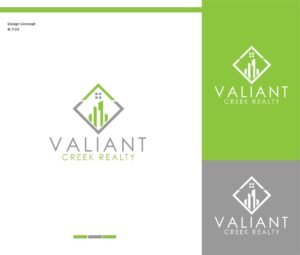
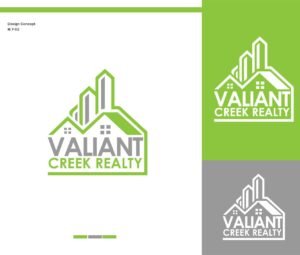
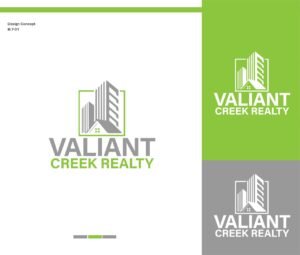
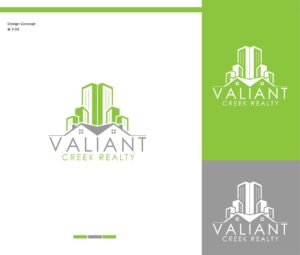
The Journey Unfolds:
The moment of revelation arrived as the logo samples were unveiled to the Customer. It was more than a presentation; it was an invitation to witness the birth of Valiant Creek’s visual identity. The Customer’s eyes sparkled with excitement as they saw their vision manifesting on the digital canvas.
The subsequent collaboration became a journey of refinement and evolution. The Customer provided insights, preferences, and nuances that transformed the samples into a bespoke masterpiece. It was a collaborative dance between client and creator, a harmonious synergy of vision and execution.
From Samples to Comprehensive Identity:
Enthralled by the possibilities and the seamless collaboration, the Customer decided to leap a Comprehensive Logo Package – a holistic approach to brand building. Valued at $319.99, this package went beyond a mere logo, encompassing business cards, letterheads, and social media branding.
Valiant Creek was no longer just a name; it was a brand with a visual identity that echoed strength and resilience. The partnership between Articon and the Customer had evolved into a story of transformation and empowerment.
Conclusion:
As we conclude the saga of Valiant Creek’s logo design, we invite you to explore the power of visual storytelling. Let your business’s identity be more than just a symbol; let it be a narrative that resonates with your audience. Embark on your creative journey, and who knows, your story might be the next masterpiece we craft together.
At Articon, we believe in the fusion of creativity and technology, and Adobe Illustrator remains our trusted companion in weaving visual wonders. Join us, and let’s redefine your brand’s identity, one stroke at a time.
![]()
![]()
![]()
Recent Comments